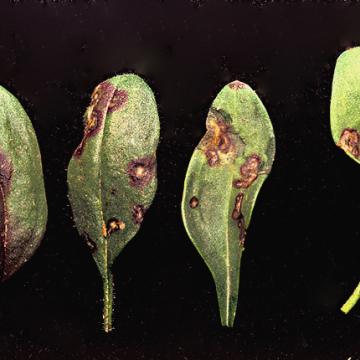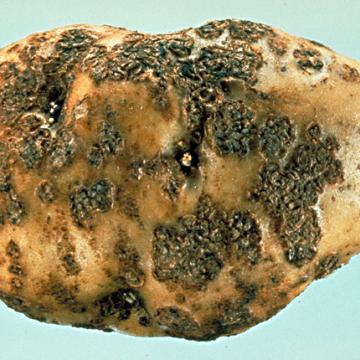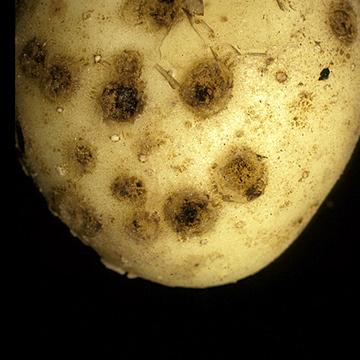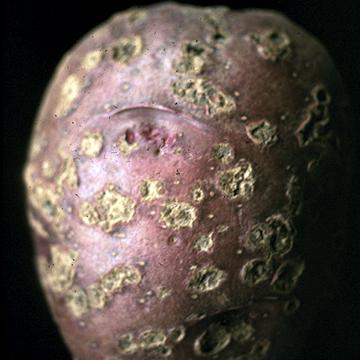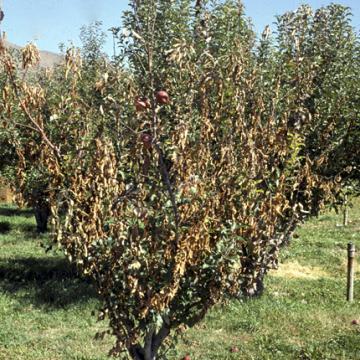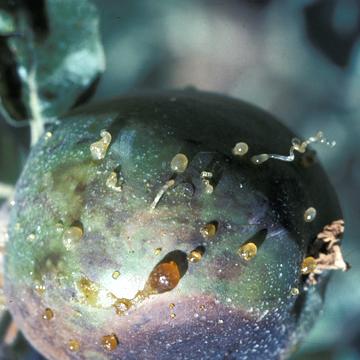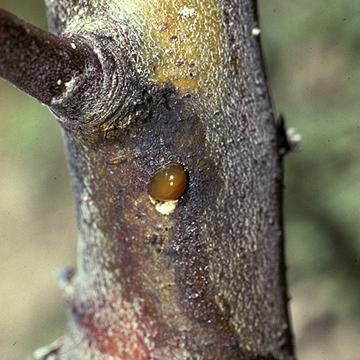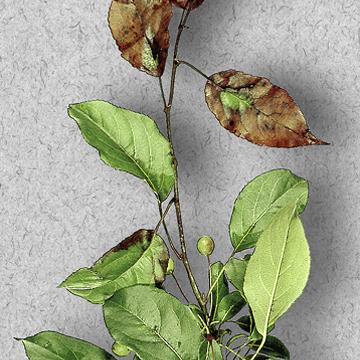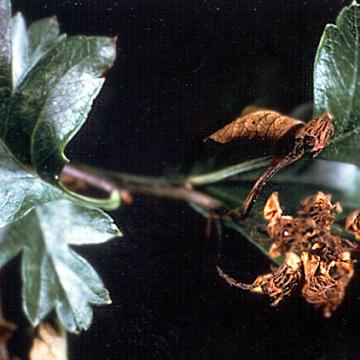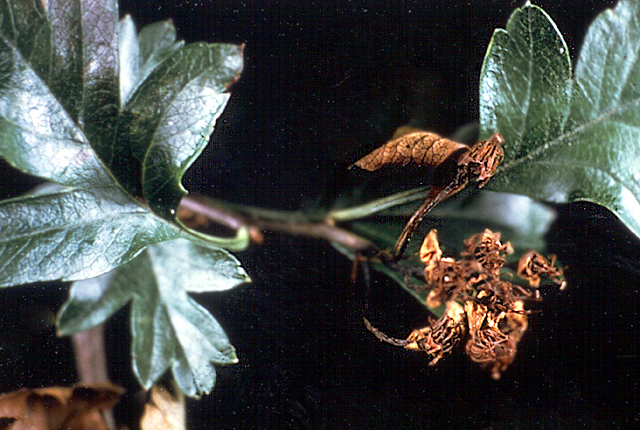DISEASE: Bacterial leaf spot
HOST: Snapdragon
Leaves with large necrotic areas with brownish centers and purplish margins. Lesions are slightly sunken.
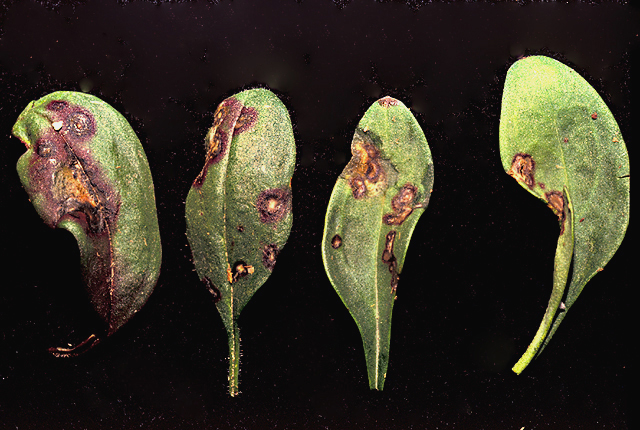
Bacterial leaf spot | Snapdragon
DISEASE: Bacterial leaf spot
HOST: Snapdragon (Antirrhinum majus)
PATHOGEN: Pseudomonas syringae pv. antirrhini
SOURCE: R. Raabe
DISEASE: Common scab (Potato scab)
HOST: Potato
Symptoms of common scab vary depending upon the cultivar. The lesions can be shallow or deep, erumpent and corky, and vary in color.
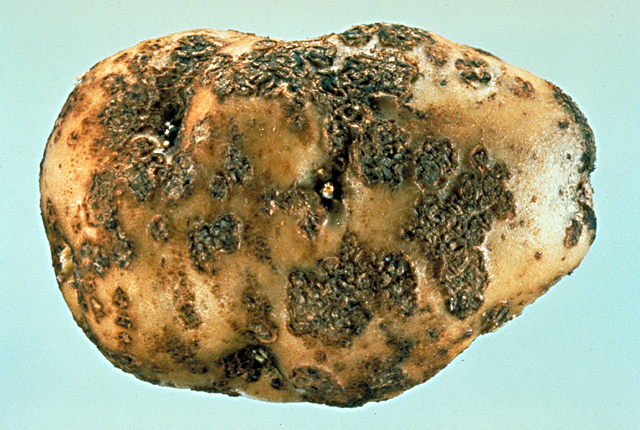
Common scab (Potato scab) | Potato
DISEASE: Common scab (Potato scab)
HOST: Potato (Solanum tuberosum)
PATHOGEN: Streptomyces scabiei
PATHOGEN SYNONYM: Streptomyces scabies
SOURCE: A. Secor
DISEASE: Common scab (Potato scab)
HOST: Potato
White-skinned tuber with sunken and superficial scab lesions.
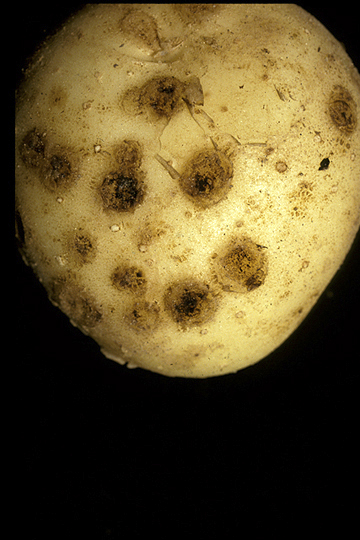
Common scab (Potato scab) | Potato
DISEASE: Common scab (Potato scab)
HOST: Potato (Solanum tuberosum)
PATHOGEN: Streptomyces scabiei
PATHOGEN SYNONYM: Streptomyces scabies
SOURCE: S. Thomson
DISEASE: Common scab (Potato scab)
HOST: Potato
Red-skinned tuber with lesions that usually penetrate less than 1 mm.
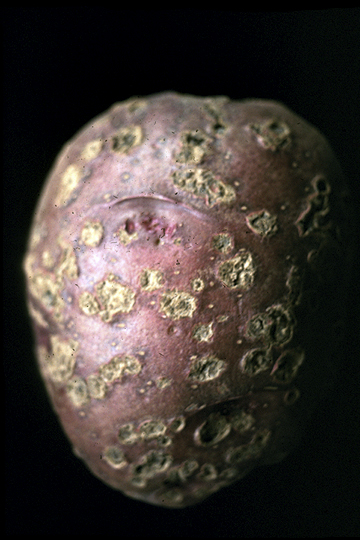
Common scab (Potato scab) | Potato
DISEASE: Common scab (Potato scab)
HOST: Potato (Solanum tuberosum)
PATHOGEN: Streptomyces scabiei
PATHOGEN SYNONYM: Streptomyces scabies
SOURCE: S. Thomson
DISEASE: Fire blight
HOST: Apple
Severe infection of apple with dying twigs and branches.
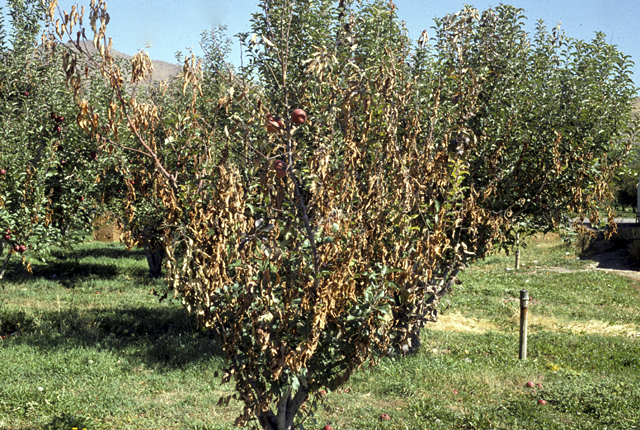
Fire blight | Apple
DISEASE: Fire blight
HOST: Apple (Malus domestica)
PATHOGEN: Erwinia amylovora
SOURCE: S. Thomson
DISEASE: Fire blight
HOST: Apple
Diseased apple with copious ooze.
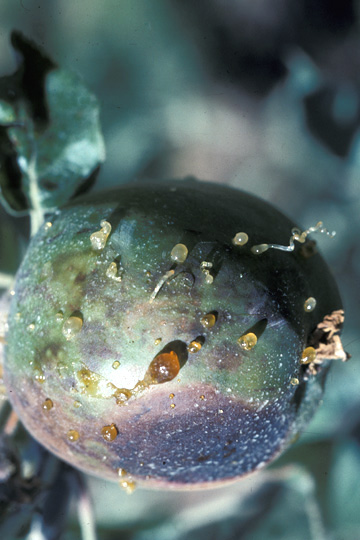
Fire blight | Apple
DISEASE: Fire blight
HOST: Apple (Malus domestica 'Jonathan')
PATHOGEN: Erwinia amylovora
SOURCE: S. Mohan
DISEASE: Fire blight
HOST: Apple
Canker on trunk oozing fire blight bacteria.
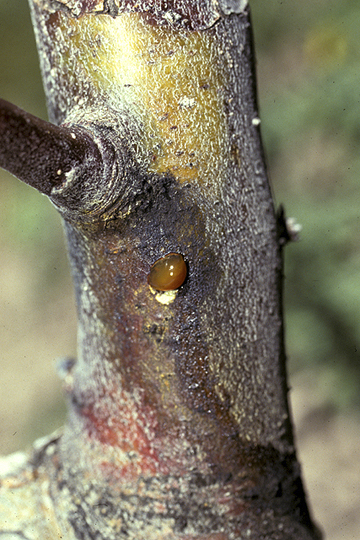
Fire blight | Apple
DISEASE: Fire blight
HOST: Apple (Malus domestica)
PATHOGEN: Erwinia amylovora
SOURCE: S. Thomson
DISEASE: Fire blight
HOST: Crabapple
Blighted shoot tip.
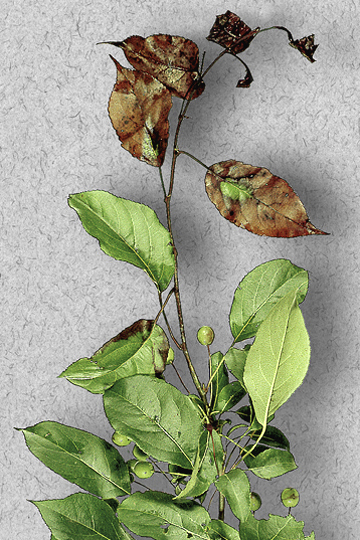
Fire blight | Crabapple
DISEASE: Fire blight
HOST: Crabapple (Malus sylvestris)
PATHOGEN: Erwinia amylovora
SOURCE: W. Sinclair


